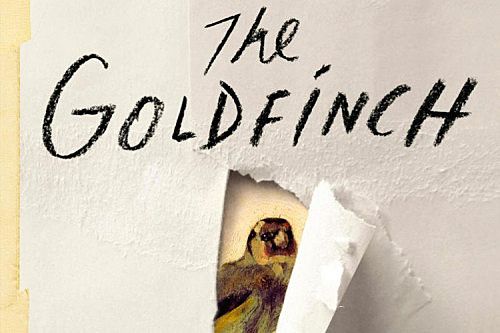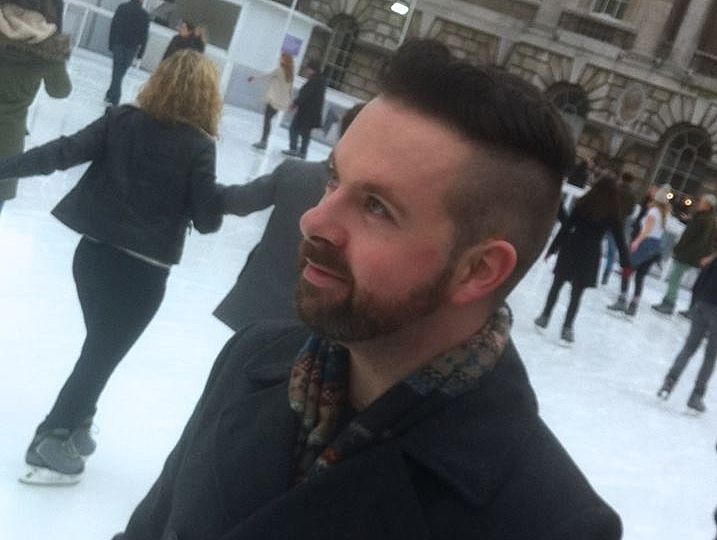Review: The Goldfinch
Kyle Rainsford reviews this year's Pulitzer Prize-winning novel The Goldfinch and finds it lacking.
The Goldfinch surrounds itself with beauty, but never manages it itself. Donna Tartt fills the 800-odd page book with beautiful architecture, lovingly restored antique furniture, and enchanting women, yet the story itself is oddly lifeless.
The putative protagonist of the novel, Theo Decker, is the son of an abusive, absentee, alcoholic father and an impossibly perfect ex-model mother. When he is thirteen, his mother dies in a terrorist attack on the Metropolitan Museum of Art; Theo is injured, alongside a cute redhead (Pippa) and what Theo assumes is her grandfather (Welty). In the rubble, Theo and Welty have some sort of communion, in which a dying and delirious Welty encourages Theo to abscond with nearby painting and titular MacGuffin, the Goldfinch.
The rest of the book follows Theo’s somnambulant journey through a variety of parental figures. After the attack, Theo gives the name of an old school acquaintance, Andy Barbour, to his social worker, and ends up living with the Barbours for a few months. The Barbours are wealthy and kind, but a grieving Theo notices none of this, proceeding through his days at school in a fog. This fog lasts until he recalls an instruction given by the dying Welty (“Hobart and Blackwell. Ring the green bell.”) which he follows to find his spiritual home, an antique furniture shop, run by Welty’s old business partner and Theo’s surrogate father (and Hagrid to his Harry Potter) Hobie. Hobie’s workshop is filled with painstaking descriptions of wood grains and smells (“the ripple and gloss of tiger maple and the frothed grain of burled walnut”, “spicy mahogany, dusty-smelling oak, black cherry with its characteristic tang and the flowering, amber-resin smell of rosewood”), the beginning of the book’s obsession with objects, possession, and beauty.
The wayward father makes a brief reappearance, asserting his patriarchal rights to take an unwilling Theo to Las Vegas. This allows the reader a chance to chide the trampy couple — Theo’s father returns with a classist stereotype of a girlfriend in tow, who smokes Marlboro Lights, likes reality shows, and has “honeydew-green toenails”. Tartt draws these two in winking contrast to the rich Barbours and rumpled Hobie, who all have impeccable and admirable taste in artwork, antiques, music, and fine food. In Vegas, Theo finds little of the beauty he loved New York, with its heritage furniture and priceless artwork. Instead, there is “the sheet-metal glare of the desert”, a “mindless, never-ending blue” sky, and “a tired-looking woman with big boobs and ratty hair”.
Class isn’t the only way in which The Goldfinch’spolitics might be called into question. All the female characters in the book are thinly-drawn and one-dimensional. Theo’s mother is sketched as the perfect mother; Mrs Barbour as uptight socialite; Pippa as quirky pixie dream girl and receptacle for Theo’s desires. None of these characters seems to have any depth besides their relation and usefulness to Theo.
Not that Theo himself is a particularly influential character. While in Vegas, Theo also meets Boris, a scarcely credible Eastern European wunderkind who spends his time alternately high and reading Dostoyevsky. As far as narrative agency is concerned, Boris could well be the true protagonist of the book, which leaves the reader wondering why we are stuck discovering all this from Theo’s point of view. Boris provides almost all motivation for Theo’s actions (Theo drinks because Boris does; he takes drugs because Boris does; he shoplifts because Boris does; he ends up in Amsterdam because Boris does). Frustratingly, this provides the book with no opportunity to anticipate or interrogate its plot developments, as they unfold off the page, inside another character’s head. It’s not even an interesting use of an unreliable narrator, as Theo doesn’t provide any false narrative for Boris’s reveals to undercut. Boris also serves as the chief vehicle for Tartt’s exposition; the ultimate resolution to the narrative’s central question — what to do with the stolen masterpiece? — is carried out off the page by Boris and relayed to Theo days later in hamfisted dénouement.
In fact, much of the plotting seems to have needed the attention of a more ruthless editor. Plot lines are introduced and then unceremoniously dropped — and at 800 pages it’s not as though the book needed padding. In Vegas, Theo’s father gets into debt with a loanshark (called, hilariously, Bobo Silver) who appears in some intimidating scenes but then, hundreds of pages later, Boris tells us he went away and was “not serious anyway”. Theo’s run of selling counterfeit goods provides dramatic tension but never actually comes to anything except a throwaway paragraph in the fourth-wall-breaking conclusion. At one point Tartt introduces a curious piece of metaphysics when she suggests that Theo’s meeting with Welty may have imparted some of the dying man’s “energy, or force field” into the former, changing his soul, but as with much else she seems uninterested in developing this theme and it isn’t pursued further.
Even the master plot struggles to hold itself together. Scenes seem to be included not because they are important or relevant to the story but because they happen to Theo, suggesting that perhaps Theo is peripheral to the plot the book really cares about. In any case, it’s often difficult to feel as though any of the resolutions to Theo’s problems are in any sense deserved, as resolutions are dropped on the reader’s lap in the eleventh hour. Often important points in the novel seem to turn on a series of increasingly fantastic chance encounters. I was lucky enough to attend an interview of Eleanor Catton in London a couple of weeks ago, where in answer to a question about how much of The Luminaries takes place indoors, she explained that books which rely on characters happening to stumble past each other outdoors start to look improbable to the reader, and at that point become more of a soap opera than a novel. At times, The Goldfinch seems to feel that way. For a book so obsessed with the beauty, it overlooks how fragile that beauty can be, how easily it can be tarred by too many brushstrokes.
Many reviewers describe the book as “Dickensian” (a sly publisher’s note, perhaps), but any resemblance to Dickens is superficial. Dickens’ protagonists struggled heroically against unfortunate coincidence; Tartt’s broods and watches passively as action happens around him. Even Theo’s pending nuptials don’t seem to have involved any conscious thought on his part. (“You know what I think we should do, Theo?” “Should we?” “Yes, please!” is the extent of the proposal.)
The other coming-of-age orphan story that The Goldfinch could be compared to is JK Rowling’s Harry Potter series. The book even seems to anticipate this (or hang a lampshade on it) by having Boris call Theo “Potter”. But unfortunately, it shares some of Harry Potter’s foibles: an angsty, unlikeable main character, a story that relegates non-white non-male characters to love interests or side stories, a bizarre lack of sex drive in a book about teenagers; without sharing in its key distinctions: its warm heart and delightful sense of humour in itself.
There’s much that The Goldfinch does well. Many of the characters, though uncomplicated, are compelling: you want to spend more time with Hobie polishing cherry-wood in his dusty basement workshop and with Boris’s network of loveable Russian rogues. The sentences are usually well-crafted and occasionally beautiful; for every bad simile (“shining in plain sight, like the sun!”) there are some gorgeous, sad metaphors: at one point, describing Theo’s grief over his mother, Tartt writes “I found myself looking out over a brackish wreck which was illumined in a light so lucid, so heartsick and empty, that I could hardly remember that the world had ever been anything but dead.”
There could be a good book — maybe even a beautiful one — buried in The Goldfinch somewhere. But the ponderous plotting, cartoonish characters, and sombre sensibility hold it back from being anywhere near as beautiful as the stolen painting at its centre. In a series of tedious questions Theo asks himself near the end of the book (“Who knows why Fabritius painted the goldfinch at all?” “Who knows what Fabritius was trying to tell us by his choice of tiny subject?” “But what does the painting say about Fabritius himself?” “But who knows what Fabritius intended?”) Tartt attempts to explain its appeal part by part. But like much else of the book, this would be better left implied. In The Goldfinch, beauty doesn’t survive the dissection.


